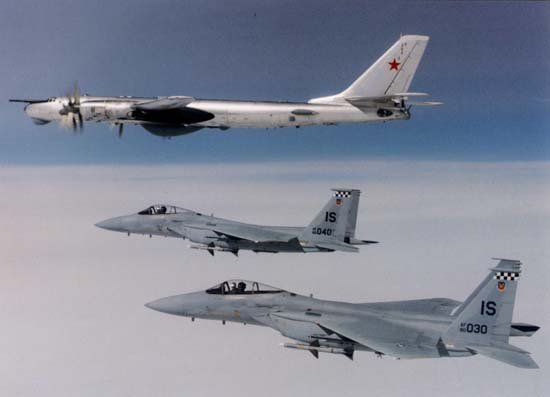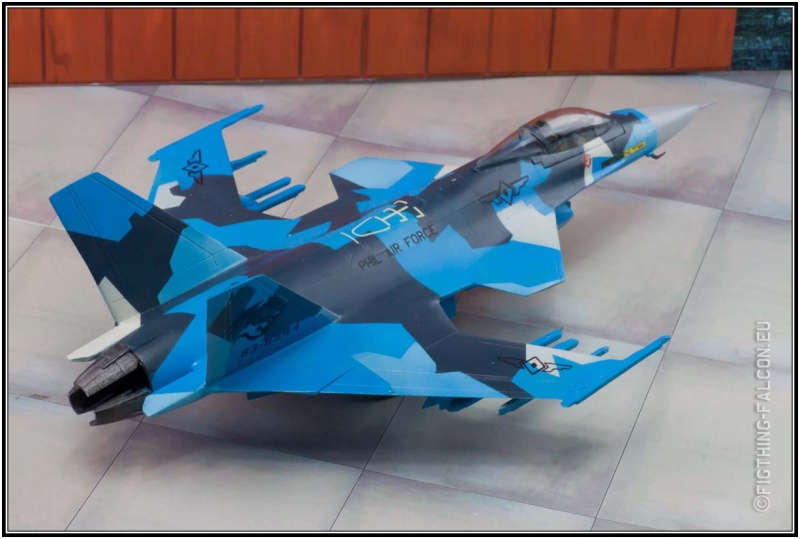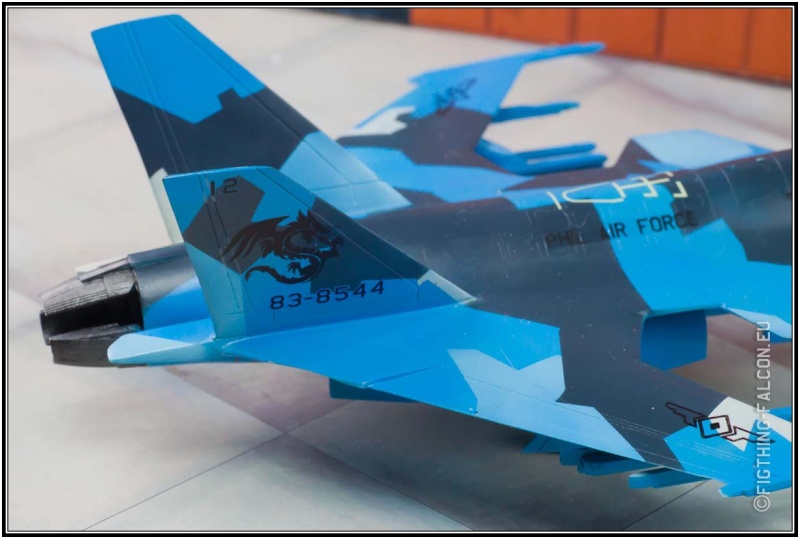
Trigger
-
Content Count
2,951 -
Joined
-
Last visited
Content Type
Profiles
Forums
Calendar
Posts posted by Trigger
-
-
...between those troops and their huge inventory of long range rockets / guided missiles the main US airbases will probably not be in existence after the first night.
Which is why they do the elephant walks. They have to practice launching all their aircraft.
-
Regarding the N Korean artillery targeting Seoul, is it not possible to target these with land based guided missiles?
I have heard they are hidden inside tunnels on the northern side of hills, but is it not possible to target them with modern missile tech?
I would think pre-programed missiles could do the job in the first 30 minutes.
Cruise missiles are great against fixed targets such as tunnel entrances, but:
A. By its very nature, artillery can be moved rapidly.
B. Do you know where all the tunnel entrances are located? Because that's one hell of a gamble when there are 25 million people in the crosshairs
C. In 1991, only 288 TLAMs were used. 325 were fired in 1998's Operation Desert Fox. The most fired was 2003's invasion of Iraq at 802. Those numbers are over the entire course of those conflicts. In Korea, you'll need to run around 2,000 sorties a day. Cruise missiles will be a part of that, but they can't carry that load.
You need platforms that can redirect, retarget, and locate targets on their own. That means you'll need a human element. The best tank killers in 1991 wasn't cruise missiles, or even A-10s. It was the F-111, dropping 500-lb LGBs onto Iraqi tanks in the dead of night. Designate the target with Pave Tack; one bomb, one kill. -
Elephant Walks aren't exactly new, they date back to WW2 when the numbered Air Forces in Europe would often generate in excess of 1,000 airplanes for mission over the European theater of operations. By the observers of these Air Force elephant walks it was often referred to as that because of the nose-to-tail taxi formations of the bombers; often resembling the nose-to-tail lines that elephants would walk in to move to the next watering hole. During World War II each combat group had four squadrons of aircraft to draw from to meet the mission requirements. Throughout the European theater elephant walks were daily occurrences that not only generated airplanes, but also constantly tested the capabilities of the ground crews, supply systems, and other support organizations.
In the SAC days, the term for the exercise was was "maximum sortie generation” (or surging). They were used as a tool by inspector general inspections (IG inspections) to test the capabilities of a wings levels of operations and mission readiness. An elephant walk, when used in IG inspection were sometimes limited to “taxi only” exercises and usually didn’t involve any airplanes taking off. In the 1980’s as many as 120 F-111’s took to the skies in part of a United States Air Forces in Europe surge operation exercise.
After the combat operations in Operation Desert Storm had ended, the 23/354 TFW celebrated the end of combat with an elephant walk of 144 A-10’s.
Their modern origins are somewhat grim. They became common in South Korea as a capabilities display and contribute to the readiness of American and allied squadrons in South Korea and nearby countries. In the event of war with North Korea, the plan is to quickly target the roughly 13,000 artillery pieces that Pyongyang has massed along the Korean demilitarized zone. In the early hours of a war, that artillery likely would bombard Seoul, which lies just 25 miles south of the DMZ. That's a serious, credible threat to the 25 million Koreas and approximately 150,000 U.S. citizens living in the greater Seoul metropolitan area. The US maintains three F-16 squadrons and an A-10 squadron in South Korea and two F-15 squadrons in Japan. Additional squadrons, almost certainly including F-22 and F-35 units, would join them during a crisis. An air campaign targeting North Korea would require 2,000 sorties per day.
By comparison, the allied air war over Iraq and Kuwait in January 1991 averaged 1,200 strike sorties per day and the U.S.-led campaign against Islamic State in Iraq and Syria averaged just 15 strikes per day. The roughly 100 U.S. F-16s and A-10s in South Korea and Japan — and any F-22s and F-35s that deployed in time for the first day of fighting — likely would be the first to hit North Korean artillery. And they’d have to launch fast to save lives in Seoul. So it’s not for no reason that the 7th Air Force in South Korea and Japan has organized more elephant walks than most Air Force commands have done.
The 7th Air Force has conducted most of its mass-takeoffs, which require intensive planning and maintenance efforts, under the auspices of the annual Vigilante Ace exercise. This is why so many elephant walk photos are of Vipers and Hogs.
Those Raptors in OP's post are PACAF jets from JBER. They'd be a part of any campaign against North Korea, so it would make sense for them to participate in such readiness exercise, even if they're still at home. F-35s at Hill have started doing them as well. -
2 hours ago, jgrease said:
Actually SMCG is all about critique, and considering you're using terms like "circle jerk brain trust" shows where you're coming from. The group has always been all about modelers improving their work, and sometimes looking at online builds and critiquing them as well. there was one instance where a modeler on this website was unfairly mocked, and that situation was dealt with and that hasn't happened since. SMCG is one of the tightest moderated modeling pages online. And actually the nonsense Kitty Hawk threw out online about both of them stems from Matt McDougall having the temerity to build the KH 1/48 Su-17 online and point out its' build issues and poor engineering. For the American rep for Kitty Hawk to go after people online and go so far as to start a Facebook page dedicated to slamming them, well that's not very professional is it?
-
You were working on these before the photos hit the internet last month?
-
18 hours ago, ARHinVA said:
From last week but still another F-35 accomplishment!
It should be noted that the F-35 deployed to combat before the first incident involving a the loss of an aircraft.
-
Where are the kits located, US or Chinese shops? If they're in the US, they you've probably got better odds. If they're in China and it sounds too good to be true? Probably is. But as others have said, PayPal is pretty good about siding with buyers in these matters.
-
Definitely interested in that 1/48 YF-12A. PM sent.
-
On 5/5/2018 at 9:25 PM, achterkirch said:
They are starting to make a comeback
They haven't been adopted by the AF yet, they're just testing out an idea. I wouldn't get too attached to it just yet, F-15s may not be around for that much longer.
-
-
Duplicate.
-
On 5/1/2018 at 8:51 PM, Brian P: Fightertown Decals said:
Funny thing is Microscale can and does print Fs colors all the time. We've done it with them and cartograf for years.
How so? FS colors aren't available in printing inks, printers can either print with spot Pantone or CMYK mixes, so how can this be?
-
-
Someone gimme free stuff!
-
Pre-orders for a kit w/o a delivery date?

-
So terribly sorry for your loss. My condolences to you and your family.
-
I am not sure how recent this article is, but it sure blasts the F-35.
I had to check on the date of that article as ALIS was identified as an issue in April of 2015. I heard McMaverick screaming about something on NPR a couple of days back, this must have been what it was about. Oddly enough, around that same time his Campaign Fundraiser was being arrested at her home because there was a meth lab there, along with unspecified quantities of LSD, cocaine, heroin, methamphetamine, about $7,000 in loose currency, and counterfeit money. A separate building on the property was found to have a hidden room that was to be used as a marijuana-grow facility.
Yeah, I think McMaverick's got bigger problems closer to home. Especially since a group of four Marine maintainers from MCAS Beaufort (the training hub for the F-35B for both the USMC and the UK), told reporters during an April 14, 2016 visit that ALIS has made their life easier.
One Marine cited the direction it gives a team of maintainers.“Walking you step through step. There’s literally a signoff for every task you do, every action you do,” he said.
“Compared to how it was originally, it’s night and day,” said another when asked about updates to the system. “The transition has been good. Every upgrade they do is easy to get ahold of, get your head around. It’s been pretty consistent as far as maintainability.”
All four men also agreed that they would recommend ALIS, or some equivalent system, for future aircraft, although they noted that logistically it would be almost impossible to retrofit such a system to existing aircraft like the F-18.
Part of the benefit of the system, the maintainers said, was the support Lockheed provides. Because ALIS is tied into Lockheed’s system, and because Lockheed contractors are integrated into the maintenance teams at Beaufort, needed parts can come quickly.
“There is a benefit to F-35 when you have a parts availability issue we can talk directly to Lockheed Martin and tell them this jet is non mission capable because of this part and they’re going to work as hard as they can to get us that part as quickly as possible,” the first maintainer said. “We can get that part in a matter of days as opposed to months.”
Another Marine compared that to the F-18, where sometimes one jet need to be “cannibalized” in order to come up with a needed part for another.
Overall, maintenance on the F-35 is “ten times easier” than on an F-18, said the first maintainer. He acknowledged that the low-observable capabilities “can slow you down at times, but it’s obviously a needed weapon system so worth the pace we have to stall on.”
Concluded a third Marine, “I am more than satisfied with it and seeing it grow and seeing it change. There’s not as much troubleshooting anymore so maintenance times are definitely up.”
The Marines also noted how the UK maintainers working at Beaufort have integrated smoothly with their US counterparts, noting they all work interchangeably on American or UK jets.
-
As long as the air control corridor permits it, why not? Going supersonic isn't the Chuck Yeager story any more so the cargo doesn't know the difference. This flight would normally take 35 minutes, but in this case, the pilot gave it the full beans and made it in 25.
-
Clearly Japan shouldve contracted YOU to design their next generation fighter.
-
I read about a similar case in the 80s (Reader's Digest) involving a transplant organ in a cooler hitching a ride in the back seat of an ANG F-4 from one city to another.
-
The Norwegians have big cargo pods.


-
-
She was a very important piece of "Arrested Development", IMHO without her the show wouldn't have had as much appeal; as though the part was written for her only.

-




 [/url]
[/url]


24 Raptors do the "Elephant Walk" in Alaska
in General Discussion
Posted
Read my original post; "constantly tested the capabilities of the ground crews, supply systems, and other support organizations." The walks aren't for the pilots' readiness, they're for the ground crews' benefit.
However, when they need to drill readiness for both ground and flight crews, they would. "In the 1980’s as many as 120 F-111’s took to the skies in part of a United States Air Forces in Europe surge operation exercise."